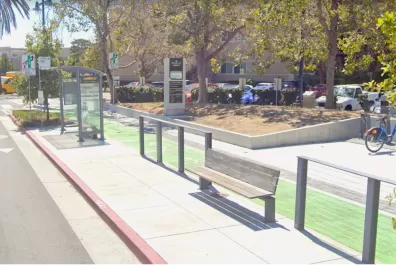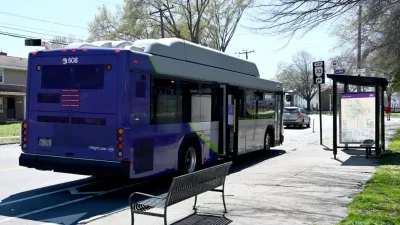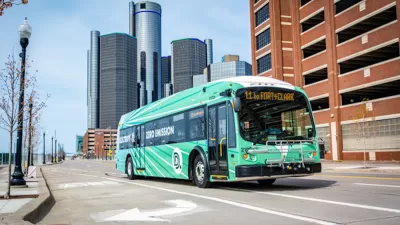Noticing a need in his community, a California mayor found a fast and affordable way to put seating at every bus stop in town.

Writing in Streetsblog, Kea Wilson describes one mayor’s effort to place seating at every bus stop in his Bay Area town. John Bauters, mayor of Emeryville, California, pledged to install benches at every bus stop in his city—and did so in seven months.
Bauters explained that bus stop seating was a no-brainer. “You don't need to study whether or not people need to sit — especially people who are older, people have mobility issues, people with children, people who've walked a long the way, or who are carrying things.”
Seating at bus stops can greatly improve the transit experience. “Studies have shown that the presence of benches and other transit amenities (read: basics) like shelters and nearby trees can encourage ridership and even decrease perceived wait time,” Wilson explains.
While the Emeryville project is small compared to many cities, Bauters says “even his small city was not immune to the challenges of tight budgets and narrow rights-of-way where private property lines sometimes encroach on scarce bus stop space.” Bautner focused on finding an affordable, quick-build solution—a bench known as a “simmeseat”—that allowed his city to provide seating now, while planners look for longer-term fixes.
As Bauters puts it, “some of the most important and best things that we can do to improve livability and transportation choices in our city often go unnoticed by the vast majority of people, but they're greatly and deeply appreciated by the people who are in need.”
FULL STORY: What It Takes to Put a Seat At Every Bus Stop in Town

Maui's Vacation Rental Debate Turns Ugly
Verbal attacks, misinformation campaigns and fistfights plague a high-stakes debate to convert thousands of vacation rentals into long-term housing.

Planetizen Federal Action Tracker
A weekly monitor of how Trump’s orders and actions are impacting planners and planning in America.

In Urban Planning, AI Prompting Could be the New Design Thinking
Creativity has long been key to great urban design. What if we see AI as our new creative partner?

How Trump's HUD Budget Proposal Would Harm Homelessness Response
Experts say the change to the HUD budget would make it more difficult to identify people who are homeless and connect them with services, and to prevent homelessness.

The Vast Potential of the Right-of-Way
One writer argues that the space between two building faces is the most important element of the built environment.

Florida Seniors Face Rising Homelessness Risk
High housing costs are pushing more seniors, many of them on a fixed income, into homelessness.
Urban Design for Planners 1: Software Tools
This six-course series explores essential urban design concepts using open source software and equips planners with the tools they need to participate fully in the urban design process.
Planning for Universal Design
Learn the tools for implementing Universal Design in planning regulations.
Gallatin County Department of Planning & Community Development
Heyer Gruel & Associates PA
JM Goldson LLC
City of Camden Redevelopment Agency
City of Astoria
Transportation Research & Education Center (TREC) at Portland State University
Jefferson Parish Government
Camden Redevelopment Agency
City of Claremont





























